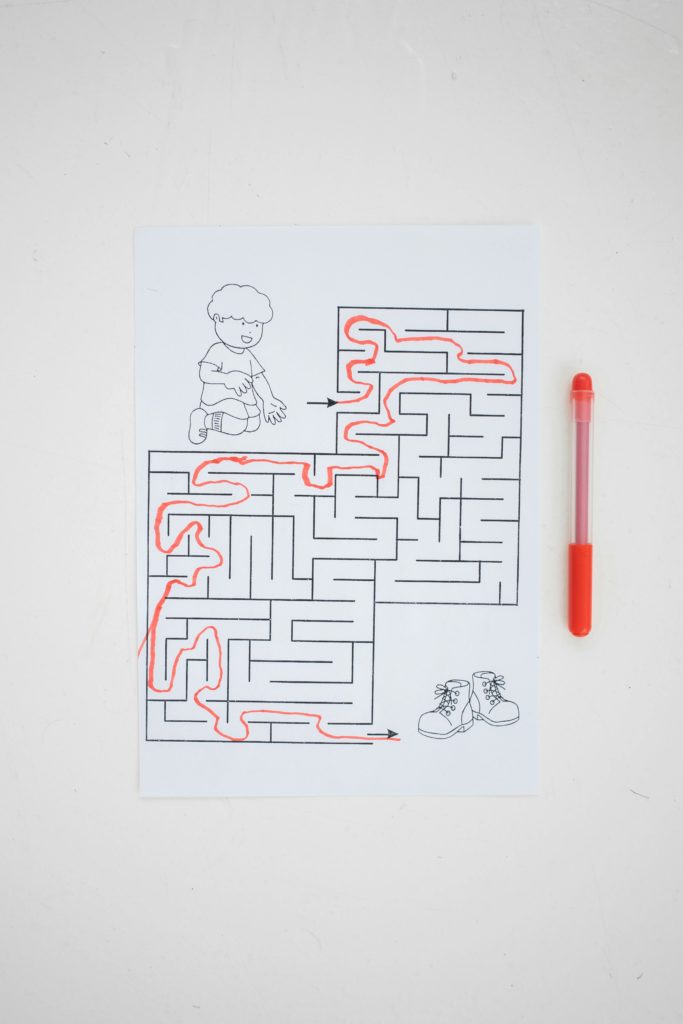Pain is a complex experience that can affect the quality of life of those who suffer from it. For people with chronic pain, everyday life can be a struggle, which is why pain relief is crucial. Understanding how pain occurs and how it can be relieved is important in order to manage and reduce pain levels. In this blog post, we will explore the concept of pain relief and take a closer look at how pain is actually created in the brain.
Even in cases where there is no actual damaged tissue, your brain can decide that you should experience pain, sometimes because of a perceived threat. This phenomenon, known as "the pain paradox"means that pain does not always accurately reflect the severity or location of a problem.
While pain can be informative, signaling problems such as overexertion or potential damage to the body, it can also become chronic and uninformative for some individuals. The brain's ability to adapt, known as neural plasticity, plays a significant role in this process. What you focus on can affect neural plasticity, so concentrating on positive aspects of life, happiness and gratitude can help relieve pain.
Neural plasticity
Studies show that spinal adjustments by chiropractors have a neural plastic effect on the brain, especially in the anterior part of the brain, which is linked to chronic pain. Early chiropractic treatment can prevent chronic pain by reducing the brain's perception of pain.
Chiropractors focus on areas of limited movement, rather than where you feel pain, since the origin of the pain is the brain, not necessarily the uncomfortable place. By improving communication between the brain and the body, chiropractic adjustments can improve the body's response to what's happening.
For example, one patient experienced knee pain that did not improve with various medical treatments, including surgery. Chiropractic adjustments focused on improving movement in other parts of the spine and the knee pain disappeared. This illustrates the importance of accurate communication between the brain and the body.
Understanding that pain is generated in the brain has significant implications for pain management and recovery, especially in cases of chronic pain where the source of pain may no longer be the affected area.
Sympathetic vs Parasympathetic
In your nervous system, two crucial subsets play a significant role in pain perception:
- Alert and danger system (sympathetic)
- Calm and healing system (parasympathetic)
When the warning and danger system is active, your heart rate increases, energy is mobilized, and large muscles prepare for fight or flight. You become more awake and alert. In contrast, the calm and healing system takes over when the alert and danger system is muted, allowing for relaxation, tissue healing and proper digestion.
In the presence of pain signals activate the warning and danger system, causing muscle tension and redirecting blood away from essential functions. While this response is useful for immediate threats, it can be problematic in chronic pain and lead to persistently high levels of adrenaline that amplify pain signals.
These pain signals, generated by the brain, aim to protect you. When the warning and danger system is active, large muscles prepare for action, such as the hamstrings and quadriceps. However, if they are not used as intended, the muscles can become sore. The activation also causes smaller muscles near the spine and skull to become less active.
Signaling errors between the brain and the body
If you struggle with chronic pain, it may seem like your brain is locked onto the pain signal. It's important to remember that your brain can play different tunes, not just pain, and can be trained to change its focus. Exercise is essential to restore proper function of large muscles. Regular visits to the chiropractor are also important to maintain activity in smaller muscles around the spine and skull.
These smaller muscles mediate the actions of the back, representing the core of the body's activity. Distorted communication between back muscles and the brain can lead to accidents and more pain.
Chiropractic care is well documented to help with neck pain, back pain and headaches, as it improves the brain's understanding of the spine and body, potentially disabling pain signals when they are no longer needed. It also affects the front part of the brain, a kind of conductor, which may explain its effectiveness in pain management and relief. However, chiropractic care offers more than pain relief; it focuses on improving communication between the brain and body for optimal function.

These parts of the brain make up the pain matrix, and their activation signals to your brain to create the sensation of pain, acting as a warning of potential problems or danger. The parts of the brain responsible for generating this pain sensation include:
- Pre-motor areas
- Cingulate cortex
- Pre-frontal cortex
- amygdala
- Sensory cortex
- Hypothalamus and thalamus
- Cerebellum
- hippocampus
- Spinal cord
Prefrontal cortex
It's important to note that the prefrontal cortex is a significant part of your brain, like an orchestra conductor, that coordinates sensory impressions, assesses your intentions, prioritizes sensory information and incorporates your past experiences and learnings to improve your ability to achieve your goals most effectively. It's fascinating that spinal adjustments affect this brain region, improving its understanding of your environment and enabling optimal function.
Another interesting factor is the role of the prefrontal cortex in pain processing and experience. The PFC is active during acute pain and plays a crucial role in regulating pain intensity by altering brain pathways. It is also thought to be involved in the transition from acute pain to a chronic condition, and this could possibly explain the positive outcomes of early assessment and chiropractic treatment for patients.
It is important to understand that small muscles near the spine and skull become less active under significant stress, as they are not necessary when dealing with threats such as a tiger. Stress, whether physical, chemical or emotional, is often a cause of spinal dysfunction.
Various stressors build up and lead to a breaking point where symptoms such as pain become visible. However, it is crucial to realize that many compensatory changes happen in the background before the pain manifests itself.
Spinal cord function is not a simple, binary state of health or pathology; it's more like navigating through "50 shades of gray." Many problems can occur before crossing the threshold of experiencing symptoms. Poor adaptations can lead to more significant issues, such as chronic pain.
Research shows that your personal situation greatly influences how you perceive and experience pain. The intensity and discomfort of pain depends on your situation and, more importantly, your thoughts and feelings related to the situation. For example, in one experiment, participants experienced pain based on their expectations, even when no actual stimulus was applied. This study highlights the role of expectations and knowledge in shaping the experience of pain.
So what can you do?
What can you do to support your immune system and relieve pain? There are several effective strategies that do not involve the use of medication:
- Mindfulness meditation: This is known to calm the mind, reduce worry and dampen the body's stress response. You can find tools online and apps to get started with your own mindfulness practice.
- Proper nutrition: Eating right is crucial. The goal is to reduce inflammation, so that signals of inflammation have less chance of reaching your brain and triggering pain.
- Good sleep: Getting sufficient high-quality sleep acts as a powerful defense mechanism against both stress and pain. Although stress and pain can affect sleep, you should emphasize healthy sleep habits that are right for you.
- Sunlight, water and socializing: Don't underestimate the value of spending time outdoors in the sun, drinking adequate water and engaging in social activities that bring joy. Laughing with friends in a relaxed environment counteracts the stress response and can help reduce the persistent stress and pain signals in your brain.
- Physical activity: Keeping your body moving is crucial. Even if pain limits your freedom of movement, you can practice mental exercises that promote physical activity. Focus on mobilizing the large muscles that are ready for "fight or flight" mode to release stiffness and tension. Don't forget to activate the smaller muscles around the spine, which can be achieved through yoga or daily exercises. Your chiropractor can help with this.
- The right treatment for your brain: Chiropractic adjustments and functional neurology can improve the brain's understanding of the body's condition. It can also change the way the prefrontal cortex works, which is crucial for the brain's pain processing. It is important to emphasize the importance of an individual approach in treatment. The aim is to improve communication between the body and the brain.
So if you experience chronic pain, make sure to maintain a positive attitude, stay active, eat healthy, prioritize good sleep and visit your chiropractor to fine-tune your brain and achieve pain relief.
If you want to know more, please contact us.


